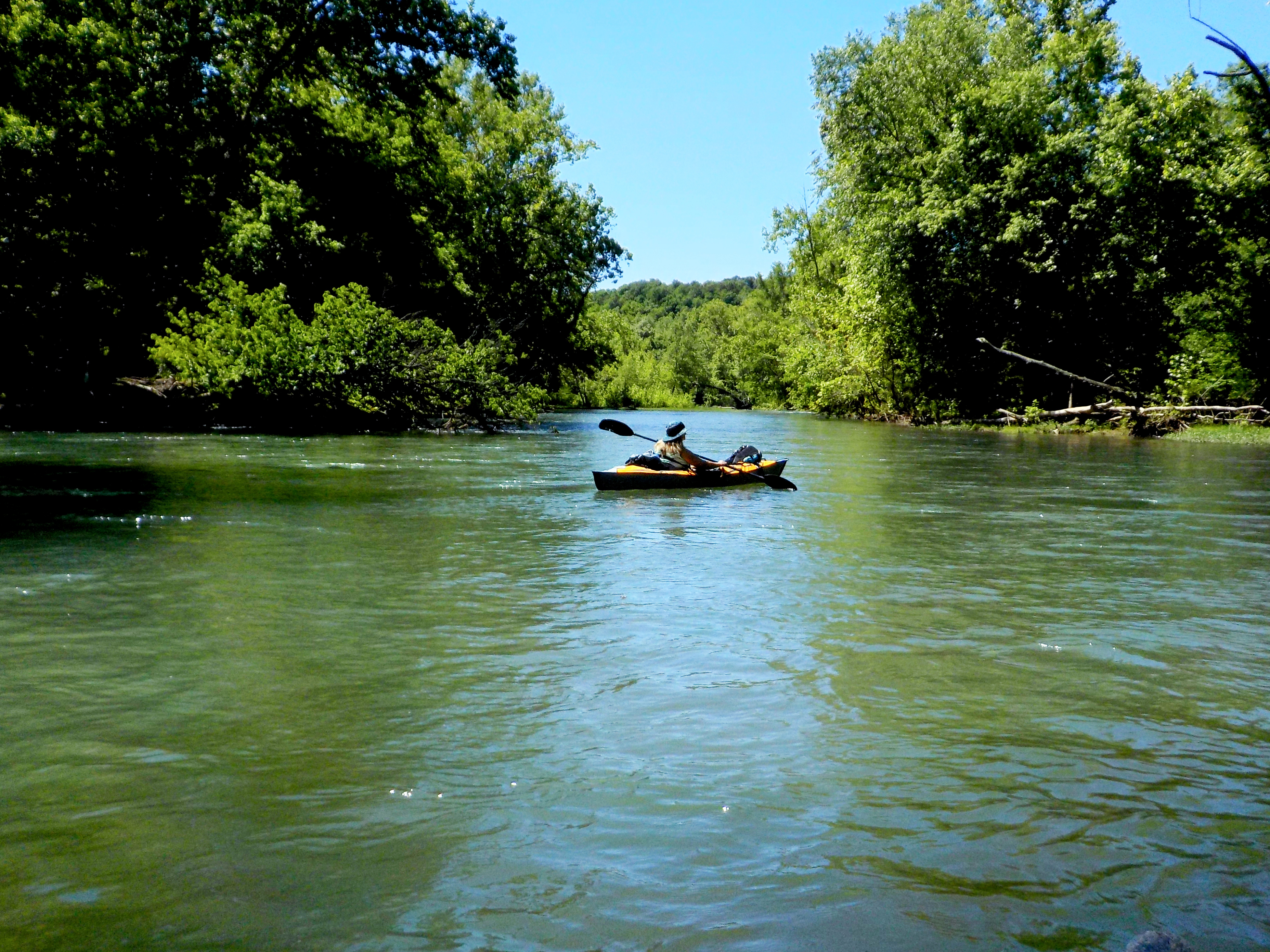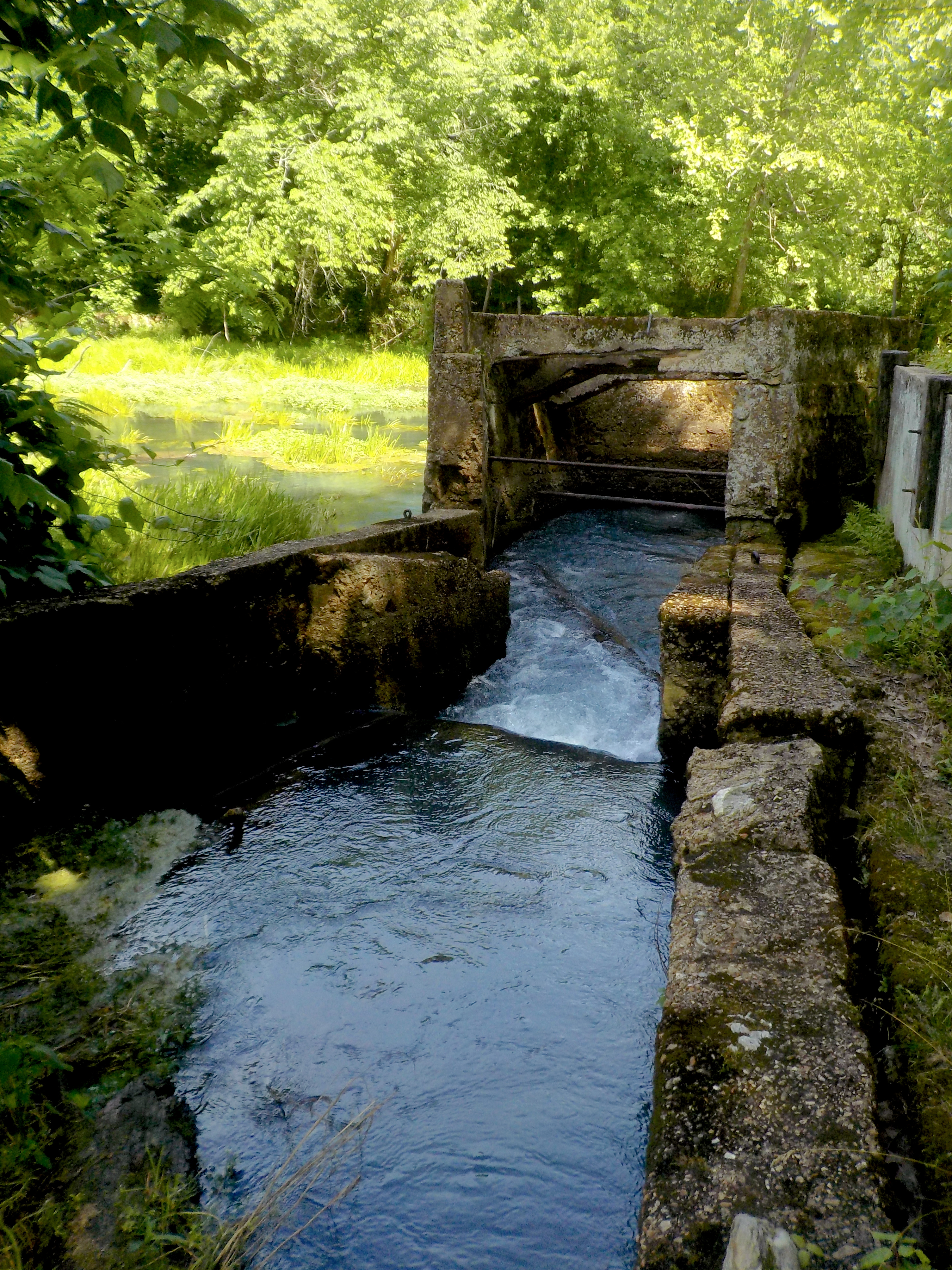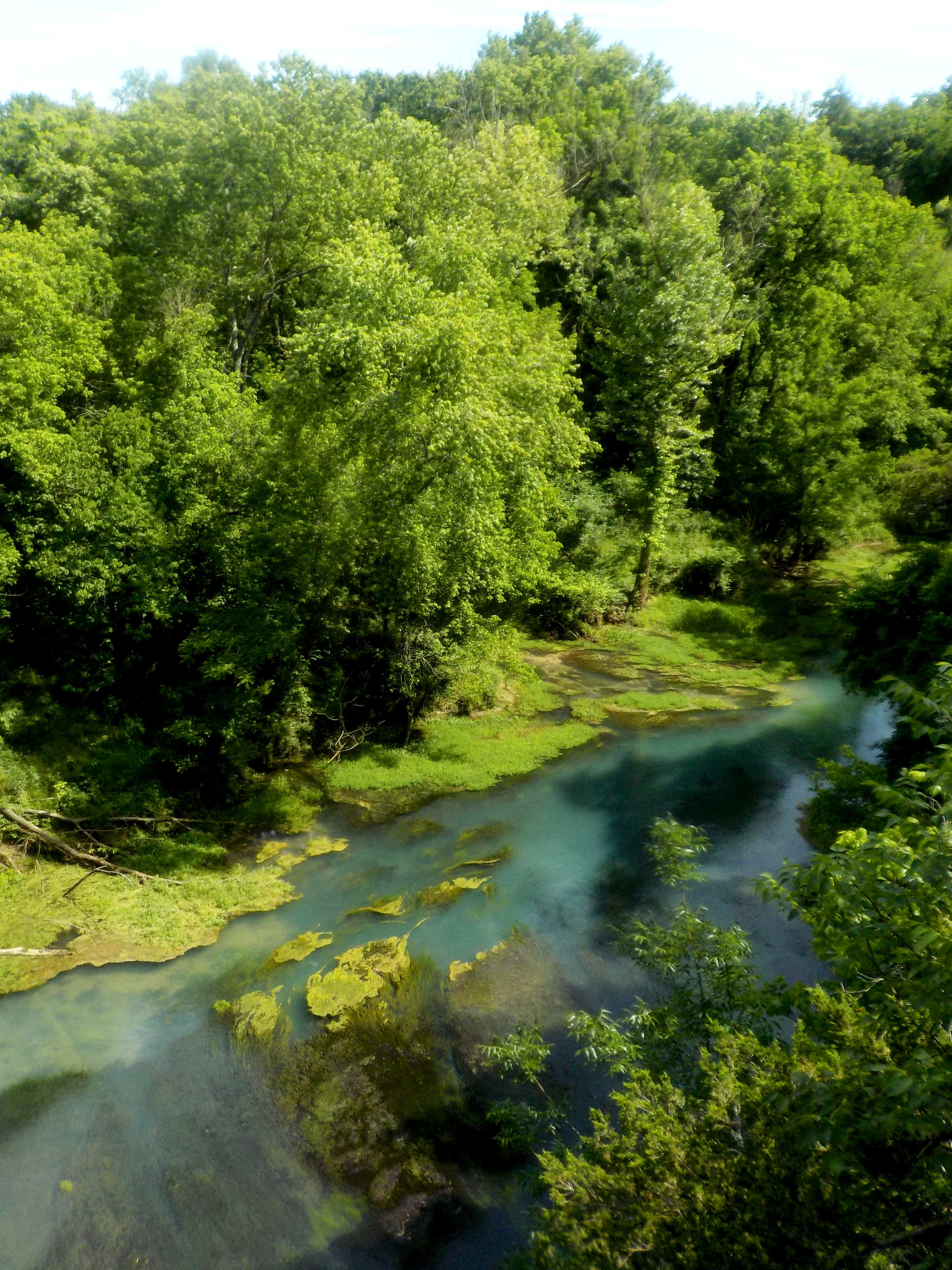Commentary |
This story is published in partnership with Ozarks Alive, a cultural preservation project led by Kaitlyn McConnell.
THE NARROWS - A recent float down the sparkling Eleven Point River was a first in my life, but after pulling the canoe up on shore at the end of the day, I left thinking of history’s propensity to repeat itself.
In this case, that thought materializes through a question: Why are we having a battle to keep the Eleven Point State Park?
It’s not the same fight as in the past. In the mid-20th century, numerous efforts were made to dam the Eleven Point river, all of which were held at bay until it became designated as a “Wild and Scenic River” in 1968. This federal designation is our nation’s strongest form of protection for free-flowing rivers and streams, while keeping the water open for public enjoyment.
Today, a new debate has emerged over whether or not to keep and open the river’s namesake state park, which would protect more than 4,000 acres of Ozarks land. The park was announced in 2016, but opponents to the project – arguing misuse of funds to purchase the land, and later over whether a scenic easement that’s adjacent to the river is compatible with a state park – have prompted questions to the land’s use. Its future is currently in court.
If history tells us anything, I suppose it’s to never be surprised. The (many) chapters of local natureways’ history seem like a drama that’s never done: Time after time, debates — for progress or protection, defined differently by those who seek change – are inherited by new generations.
At times, it seems folks don’t read the previous chapters in the story.
Connection with the river

Such thoughts weren’t initially on my mind when I recently jumped into my car and drove from Springfield to Oregon County’s Riverton access point, a few miles outside of Alton. There, I met David Stokely and Cindy Bridges, who graciously offered to be my guides on the river.
The trip’s impetus was to visit a place called The Narrows, a destination along the Eleven Point named for a razorback ridge separating the river and the Frederick Creek valley. The spot, though, is more than simply scenic: Beginning in the mid-20th century, conservationist Burford B. Morgan grew aquatic moss in the chilly spring water and shipped it all over the country.
“It was a renewable resource that kept on growing,” says Cindy, who grew up locally and knew of Morgan. “It would keep on growing, and it wasn’t harming it to harvest it. That moss doesn’t grow just anywhere. It has to have specific clean, cold water.”
As we pushed away from the access point and floated down the river, I also learned of the place’s personal significance for David. His grandparents had a cabin at The Narrows, and he spent his growing-up years at the spot that gave an opportunity to develop a love for the natural Ozarks that has extended throughout his life.
Another significant link in that story is David’s grandfather, Z. Lee “Doc” Stokely, who was a dentist-turned-postmaster and environmental activist from Poplar Bluff.
For years, the elder Stokely was also a journalist, writing conservation-based columns for the Daily American Republic, Poplar Bluff’s newspaper; the Ozark Graphic magazine in Doniphan; and the St. Louis Post-Dispatch. Some of his topics were focused on preserving the river when others wanted to dam it.
“My grandfather was one of the ‘boots-on-the-ground,’ local guys with some influence that really helped a lot in that dam fight,” said David, seated in the back of the canoe.
Others, including Leo Drey, founder of Pioneer Forest and the LAD Foundation — the latter which David currently serves as a board member — and the aforementioned Morgan were active supporters of keeping the river intact.
“So few people see these proposed dams in their true light and would trade our last two unspoiled streams for another muddle,” wrote Morgan in a letter to the editor in 1959.
How did the fight begin?

That fight on the Eleven Point was tied to the Flood Control Act of 1938. Three years after it passed, a hearing was held for what was called the Water Valley Dam and Reservoir project. It started the first of at least eight attempts to dam the Eleven Point between 1941 and 1964.
It’s unclear just when all of those pushes were, but one was in the early 1950s. Perhaps it stemmed from the urging of then-U.S. President Harry S. Truman, who implored Congress to take measures to fight flooding that had been deferred due to World War II.
Some in Missouri clearly heeded his call — while others did not. The idea brought about such strong local opposition that a delegation, primarily of farmers, went to Washington D.C. in protest in 1952.
Another key moment came in 1964. This time, a revolt known as the Riparian Rebellion — featuring folks dressed in old-time clothes with farm implements in hand — protested and helped change the future closer to home. Because while their actions showed support for the river, they also made a difference in David’s life: It helped him see, even at 9 years old, the importance of the natural world around him.
“I guess when you can see the obvious truth there in front of you, and it’s explained to you, it makes sense to not spoil all this stuff that exists nowhere else on the planet — and some of the highest quality,” says David, who has spent points of his career as a vo-ag teacher, environmental consultant, political leader and conservation activist.
“Some day, they’ll realize what a resource water is in the Ozarks.”
Thanks to the efforts to preserve the river back then, the Eleven Point became a National Scenic River in 1968, one of eight initial units of the National Wild and Scenic River system that is overseen by the U.S. Forest Service. It was in contrast to the nearby Ozark National Scenic Riverways — established in 1964 and the first national park area to protect a river system — which includes the Current and Jacks Fork rivers.
The differing management organizations are an important distinction in role and purpose of their relevant lands. ONSR, overseen by the National Park Service, is more focused on tourism, while the Forest Service’s primary goal is conservation.
Despite that difference in oversight, anecdotally it feels like there is still resentment in surrounding areas about the designations, both of which compelled families to give up land. For ONSR, it was to form the park, while Eleven Point was protected by a scenic easement. The latter meant the land along the river was still technically privately owned, but restrictions limited what could be done with it. More on that in a moment.
Reaching The Narrows

We eventually reach The Narrows, a patch of Earth with its blue-hued pools of water, vibrant green growth and soft paths that cut into a place that feels a world away.
As we walk the grassy paths and down to the ruins of Thomasson Mill, I learn more about Morgan, the man who somehow realized that the place was primed to grow varieties of aquatic moss.
“He sold to every Ben Franklin store in the United States at one time,” says David.
After purchasing the property in 1951, Morgan also cultivated his Ozarks oasis as a destination. For $1 on the honor system, David said, folks could enjoy manicured walking paths and picnic spots. Some of the tables where people sat still peek out from the foliage today, linking past and present.
The ardent conservationist, Morgan also saw the value of his property beyond its moss-cultivating days. In 1972, he sold his acreage and four springs — Blue, Morgan, Jones and Sullivan — to the U.S. Forest Service.
“It is the largest single real estate transaction made by the Forest Service, charged by Congress in 1968 with the management of 14,158 acres of land within the scenic zone from Thomasville, 44.4 miles downstream to the bridge over Highway 143,” noted the Springfield Daily News of the purchase, which was also noted in the Kansas City Star:
“Morgan praised the Forest Service for its policy assuring protection and preservation of the land and water in a natural unspoiled state. He has allowed only minimal development and use on the land which he has managed, resisting pressure to sell lots for commercial development,” printed the Star.
Writing similar history

I read those words far from the Eleven Point — except in my mind — at a Springfield Starbucks.
As I absorbed more, it hit me: How often are our discussions regarding conservation — especially around land for the common good — ones that seem to repeat once a generation? Because 70 years after the farmers went to D.C., and nearly 60 after the Riparian Rebellion, we’re here in a similar fight: This time, to preserve the Eleven Point State Park, the future of which is currently in court and in limbo.
The park has been faced with challenges shortly after its official announcement in 2016.
That year, when Jay Nixon was governor of Missouri, four new state parks were announced: Bryant Creek, Jay Nixon, Ozark Mountain (now Shepherd of the Hills) and Eleven Point. The latter’s 4,162 acres were purchased for around $8 million, according to information published by the Springfield News-Leader but written by Missouri State Parks.
Much of the Eleven Point’s acreage came in two chunks — the Pigman Ranch, where the Beatles had a visit in the 1960s, and land owned by Buildings for Babies Foundation.
Its funding tied to a settlement from the American Smelting and Refining Company. According to information from the Sierra Club, a grassroots environmental organization, Missouri was awarded approximately $75 million in damages — almost $40 million for cleanup of contaminated sites, and $35 million to restore or replace damaged natural resources.
“Funds to purchase the land came from a legal settlement with ASARCO, the lead mining company whose sloppy practices poisoned large areas with mine waste,” Marisa Frazier, conservation program coordinator with the Missouri Sierra Club, tells me.
She also notes that part of those funds is targeted to rehabilitating damaged land, while another part is dedicated to purchasing ‘mitigation’ land in the same eco-region.
“The property along the Eleven Point River was purchased with this mitigation funding,” she says.
Opponents to the purchase, however, felt that the use of funding was inappropriate.
“Since then, there have been attempts every year in the Missouri legislature to sell specifically the Eleven Point State Park, but the constituents reaching out to their representatives and senators have managed to stop that every year that it has come up,” says Frazier.
Today, the key issue regarding the Eleven Point ties to the aforementioned scenic easement along 44 miles of the river when the “wild and scenic” designation was established. Under that designation, the 625 acres of land next to the river couldn’t be publicly used or accessed — which opponents say is in conflict with the state park. The issue is now in court.
“We don't agree with that argument,” says Frazier. “The Forest Service owns scenic easement land along that whole section of the river, and they own land that is for the purposes of natural resource protection. And Missouri State Parks also owns land that is specifically for the purposes of natural resource protection. The argument really comes down to just not violating the purposes of the scenic river easement, which is something that we fully agree with. We love the natural resource protection piece of that scenic river easement.
“The debate is over public access, and they are trying to say that the purposes of a state park are not compatible because they think it will open up additional public access or interfere with that scenic easement – which could certainly be mitigated by just having public access on the portion of the park that is not within the scenic river easement.”
According to a May 2021 story on KY3, Circuit Court judge Steven Privette ruled that the portion of the park that was within the scenic river easement needed to be sold. The decision was referred to Missouri’s Southern District Court of Appeals; a verdict is currently pending.
“It has been taking an abnormally long time to get any ruling on that,” says Frazier, who notes the hearing date was in October 2021. “We don't really know why it would take that long to rule it. I wish I could tell you what that might mean.”
It should be noted that while the Sierra Club is not a party to the lawsuit, it and a variety of other local environmental organizations have voiced their support of the park through an amicus brief, which was filed on March 24, 2021 (and which was headed by Jay Nixon, now an attorney in private practice).
If the decision is against the park, Frazier says the fight isn’t over. The land is too important.
“The Eleven Point is in a really unique area,” she says. “It protects around 4,200 acres of habitat that is already contiguous with other protected lands, and it is in one of our most pristine areas of the state, one of our nationally protected wild and scenic rivers, which is a pretty high-caliber standard. So it would allow contiguous connected wildlife habitat, which is higher priority than a dispersed, disconnected habitat. It also contains a variety of flora and fauna, including the river even hosting some endangered species as well. So protecting water quality within the river is very high importance.”
As I write these words, my mind meanders back to the float on the Eleven Point. It felt like the perfect day, with the sun shimmering on the glass-like water; the feeling that we owned the river.
When I’m in places such as these, so remote, without cell service or connection with the outside world, it makes me think of generations not so long ago, but seemingly worlds away. What were their lives like in the reality (perhaps privilege) of simply being where they were instead of facing distractions as we do now? Where birds and softly moving water and the breeze were voices that spoke louder than the roar of distractions that are both everyday and every day?
In the silence, the sights also spoke, reminding that the best things in life are free — and should be shared.
But not given away.
Resources
“Approves stand on Ozarks recreation area,” B.B. Morgan, The Democrat-Argus, Jan. 30 1959
“Conservation pioneer dies,” The Daily Standard, May 23, 1974
“Dr. Z. Lee Stokely, 78, died of heart attack,” The Current Local, May 9, 1974“Eleven Point River,” Encyclopedia of Arkansas
“Missouri’s attorney general appeals court order forcing state to sell part of state park in Oregon County,” Toni Chritton Johnson, KY3, May 18, 2021
“Narrows to be preserved,” Springfield Daily News, April 20, 1972
“Rod and Gun,” Harry J. Fey, St. Louis Globe-Democrat, Dec. 30, 1951
“Special Message to the Congress on Flood Control in the Mississippi River Basin,” Harry S Truman, Harry S Truman Library & Museum, July 16, 1947
“Ozark gem now public,” The Kansas City Star, April 23, 1972
“State parks add three new ‘Missouri Masterpieces,’” Tom Uhlenbrock, Missouri State Parks (published by Springfield News-Leader), Dec. 22, 2016
”Water Valley, again,” St. Louis Post-Dispatch, Jan. 11, 1964



